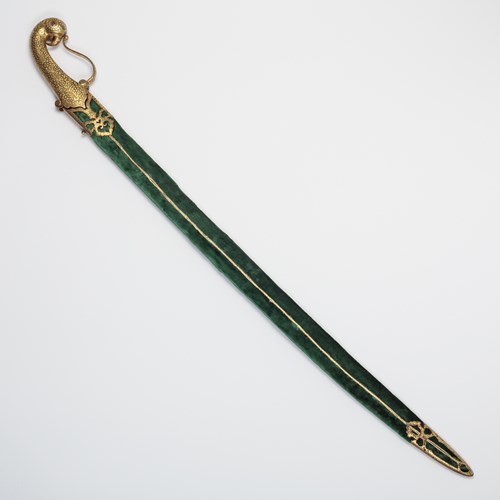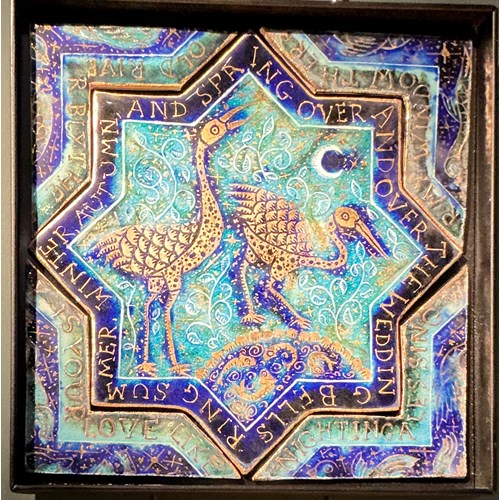Marketplace
Ottoman Tombak Stirrups
Ottoman Tombak Stirrups
Date 18th century
Period 1600-1750, 1750-1850, 18th century
Origin Turkey
Medium Gilt-copper
Dimension 22 x 19 cm (8⁵/₈ x 7¹/₂ inches)
The pair of gilt-copper stirrups decorated with carved flower heads and scalloped borders. The top section is brass, which has been added later with attached leather straps. The word tombak in its Turkish context generally refers to metal which has been covered with a layer of gold. This process of gilding on metal using mercury was referred to as tombaklama (Sahin, p. 299). During the Ottoman period, tombak goods served for two main functions – as household and military wares such as helmets, harnesses, staffs, swords, and as ceremonial items (see Kayaoglu). This pair of Ottoman tombak stirrups falls under the military category and would have been used by a high-ranking member of the army. The popularity of tombak might be due to the fact that the Muslim courts were prohibited from using luxury items made of gold and silver according to Islamic doctrine. A similar shaped late 18th century tombak stirrup (broad-bottomed stirrup) but made of brass is illustrated in Kayaoglu, Tombak, 1992. Literature: Kayaoglu, Tombak, Disbank, Turkey, 1992. Sahin, The Museum of Turkish and Islamic Arts: Thirteen Centuries of Glory from the Umayyads to the Ottomans, Blue Dome Press, New York, NY, 2009.
Stock no.: A4422
Stock no.: A4422
Date: 18th century
Period: 1600-1750, 1750-1850, 18th century
Origin: Turkey
Medium: Gilt-copper
Dimension: 22 x 19 cm (8⁵/₈ x 7¹/₂ inches)
More artworks from the Gallery








